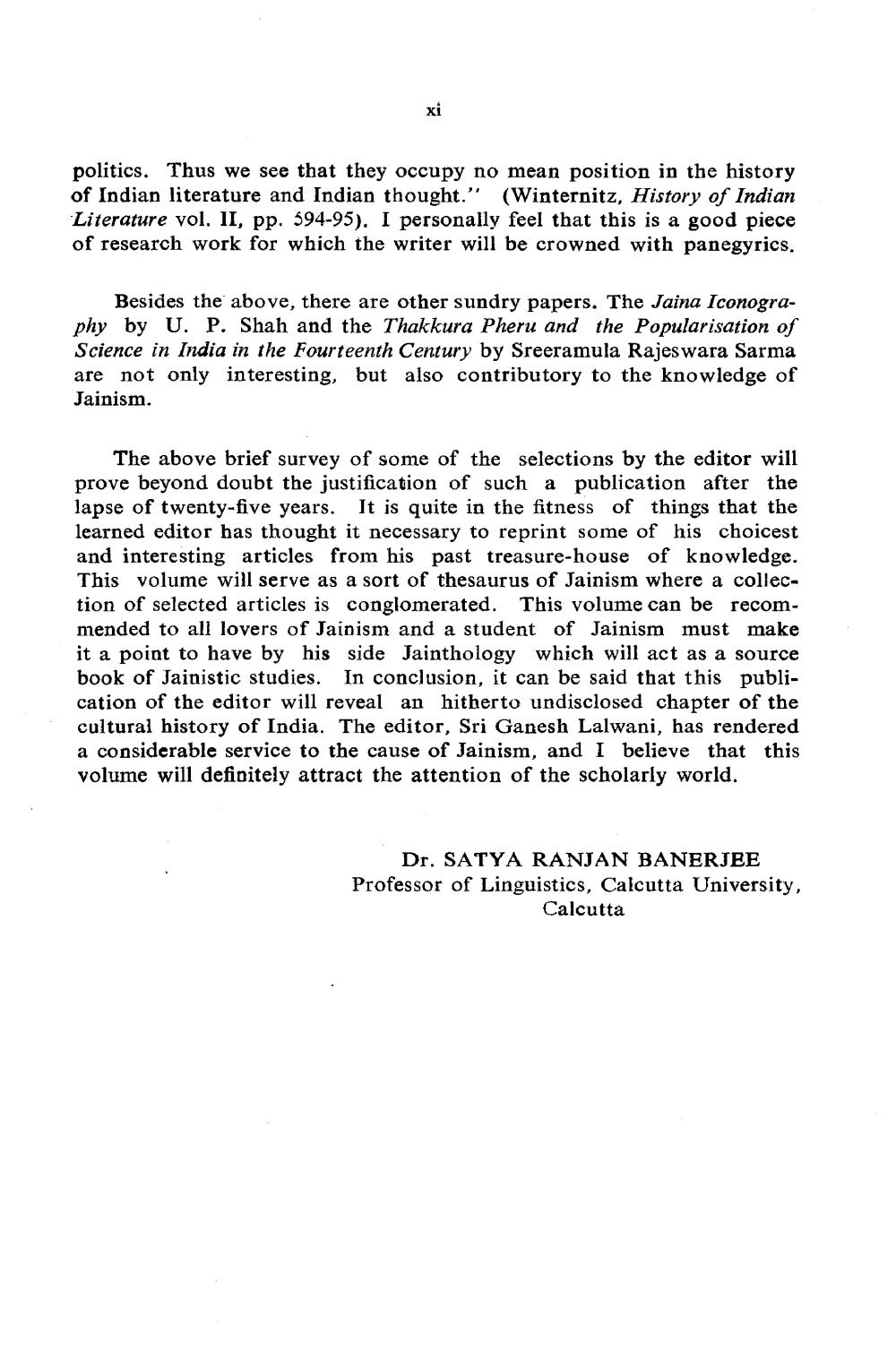________________
politics. Thus we see that they occupy no mean position in the history of Indian literature and Indian thought.” (Winternitz, History of Indian Literature vol. II, pp. 594-95). I personally feel that this is a good piece of research work for which the writer will be crowned with panegyrics.
Besides the above, there are other sundry papers. The Jaina Iconography by U. P. Shah and the Thakkura Pheru and the Popularisation of Science in India in the Fourteenth Century by Sreeramula Rajeswara Sarma are not only interesting, but also contributory to the knowledge of Jainism.
The above brief survey of some of the selections by the editor will prove beyond doubt the justification of such a publication after the lapse of twenty-five years. It is quite in the fitness of things that the learned editor has thought it necessary to reprint some of his choicest and interesting articles from his past treasure-house of knowledge. This volume will serve as a sort of thesaurus of Jainism where a collection of selected articles is conglomerated. This volume can be recommended to all lovers of Jainism and a student of Jainism must make it a point to have by his side Jainthology which will act as a source book of Jainistic studies. In conclusion, it can be said that this publication of the editor will reveal an hitherto undisclosed chapter of the cultural history of India. The editor, Sri Ganesh Lalwani, has rendered a considerable service to the cause of Jainism, and I believe that this volume will definitely attract the attention of the scholarly world.
Dr. SATYA RANJAN BANERJEE Professor of Linguistics, Calcutta University,
Calcutta




